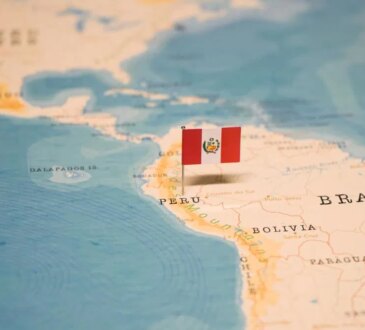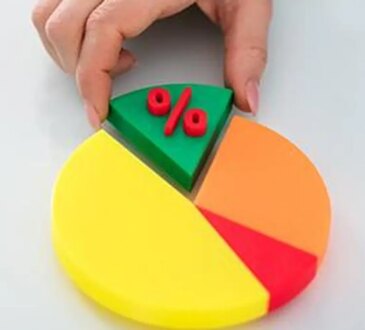More than 28 million accounts, ranging from pensions and investments to savings accounts and Child Trust Funds, worth a staggering £88.5 billion are lost in the UK.
The most common reasons people lose touch with their assets are through moving home and forgetting to update contact details, changing jobs and losing track of old pension pots or becoming vulnerable, for example living with dementia.
But with plenty of free services out there to help reunite you with your lost cash, your savings need not be lost forever.
Sign up to Money Morning
Don’t miss the latest investment and personal finances news, market analysis, plus money-saving tips with our free twice-daily newsletter
Don’t miss the latest investment and personal finances news, market analysis, plus money-saving tips with our free twice-daily newsletter
In this guide, we explain how to find lost pensions, savings or investments.
Do I have a lost pension?
Considering the average person has 11 jobs in their lifetime, it’s little wonder we lose track of individual pots, particularly if the time spent working for the firm was fleeting.
Lisa Picardo, chief business officer UK at PensionBee, said: “It is unsurprisingly quite common to lose track of a pension, and our own research shows that nearly one in five UK adults believe they have lost a pension pot, equating to around 8.8 million people.
“If you are enrolled into a pension scheme at work and then leave that job, your pension does not move with you. A new pot is created at your next employer, and unless you take steps to consolidate or keep records, it is easy to forget where your savings are held.”
People also lose track of pensions because their provider changes its name, moves its communications online or sends letters to an old address.
Since the advent of auto-enrolment which was rolled out between 2012 and 2018, anyone aged 22 and over earning £10,000 or more will be automatically added to the company pension scheme when joining the company.
This makes it easier to forget you’ve been building up retirement savings.
The good news is that your money remains invested and can continue to grow, depending on stock market conditions, even after you leave a company.
How do I find lost pensions?
You can track down your old pensions by contacting past employers to find out who the pension provider is and then calling or emailing the provider directly to enquire after your retirement savings.
You will usually need your National Insurance number and details of when you worked there to help them track you down.
Or, you can use the government’s free pension tracing service.
For this you’ll need to input details of the employer who set up the pension. You’ll then be given the name, address and telephone number of the provider who operates their scheme so you can get in touch directly.
Alternatively, you can use a free tracing service such as Gretel which has around 3,500 companies spanning the pensions, investments and savings sectors. If your provider is one of those registered, by entering your name, address and date of birth you can find out in minutes if you have a lost pension and where it is.
Picardo adds: “One of the most effective ways to stay in control of your various pension pots is to bring them together in one place.
“Consolidation can help you see your savings clearly, avoid forgotten or lost pots, help you engage with and grow your retirement savings and feel more confident about planning for the future.”
How to find lost ISAs and savings accounts
If you took out your ISA through a wealth platform such as Hargreaves Lansdown, AJ Bell or Charles Stanley, they should be your first point of contact. They can update your contact details and reunite you with your savings.
Trade body the Investment Association also offers a free service via its Unclaimed Assets portal to track down stock-market related investments such as stocks and shares ISAs, investment funds or Exchange Traded Funds (ETFs).
Looking for cash savings accounts, opened through a bank, building society or NS&I?
You can use the My lost account service to search for accounts that have been marked as lost or dormant by your provider.
Set aside some time to complete the registration process.
Firstly, you need a valid email address. Then, to maximise your chance of finding an old savings account you’ll need to input as many of your previous addresses as you can remember and which institution the account was held with.
You’ll also be asked for sort codes, account numbers but it is not essential to provide these. Your request is then sent off to the bank or building society which contacts you directly once they’ve completed a search.
If your bank hasn’t marked the account as lost or dormant, however, you might not be successful.
Child Trust Funds are another type of savings account that commonly ends up lost. Child Trust Funds were set up for children born between 1 September 2002 and 1 March 2011.
More than a quarter of the accounts were opened by the government on behalf of parents.
According to HMRC, the value of unclaimed accounts for children who’ve now turned 18 but have never accessed their money is £1.4 billion.
Charlene Young, senior pensions and savings expert at wealth platform AJ Bell, said: “With over a quarter of these accounts set up by the government because parents failed to do so within the 12-month window it’s no surprise how much money sits unclaimed. Parents and children weren’t aware or won’t remember that an account was even set up, let alone where the money is now.”
You can search for a lost Child Trust Fund on the government’s website using your national insurance number and date of birth.
We explore lost Child Trust Funds in more detail in a separate piece.
How to find lost shares
If you’ve bought shares directly with a company, rather than going through a wealth platform, you’ll need to contact one of three share registrars – MUFG, Computer Share or Equiniti – to start your search.
If you don’t know which registrar is in charge of your shares, you’ll have to make enquiries with all three. You’ll need to tell them which company you think you have shares with as they can only carry out a search based on what you have told them.
Be ready to pay some fees here, however, depending on what changes they need to make to your records or if you can’t find your share certificate and need a new one.
Duncan Stevens, chief executive of free-account tracing service Gretel, said: “If you don’t have a share certificate you’ll need to sign an indemnity form and you may be charged an additional fee for an insurance indemnity.
“It’s an insurance policy that protects the organisation from fraud in the event that somebody finds that certificate and tries to make a claim against those shares for that money.”
You could also be charged for changing your address and asking for a dividend cheque to be reissued because it was posted to an old address. Fees can run from the tens of pounds into hundreds of pounds depending on the work that needs to be done.
How to find lost Premium Bonds
To find lost Premium Bonds, NS&I has its own tracing tool on its website. It will be able to find your bonds even if you have lost your bond document or you can’t find your holder’s number.
You can log into your NS&I account online to find your holder number which contains details of all your bonds. If you can’t remember your NS&I online account number, you can receive it by email after passing a security check.
Savers can also write to NS&I to locate lost bonds.
Unless you have cashed them in, your Premium Bonds will have continued to be entered into the monthly prize draw so don’t forget to check its prize checker tool to see if you’re owed any cash. There are millions of unclaimed Premium Bonds prizes out there, so it could be worth checking.
We explain how Premium Bonds work and how Premium Bonds prize winners are notified in separate articles.
Do you have a money story you’d like to share? Get in touch by emailing editor@moneyweek.com.




